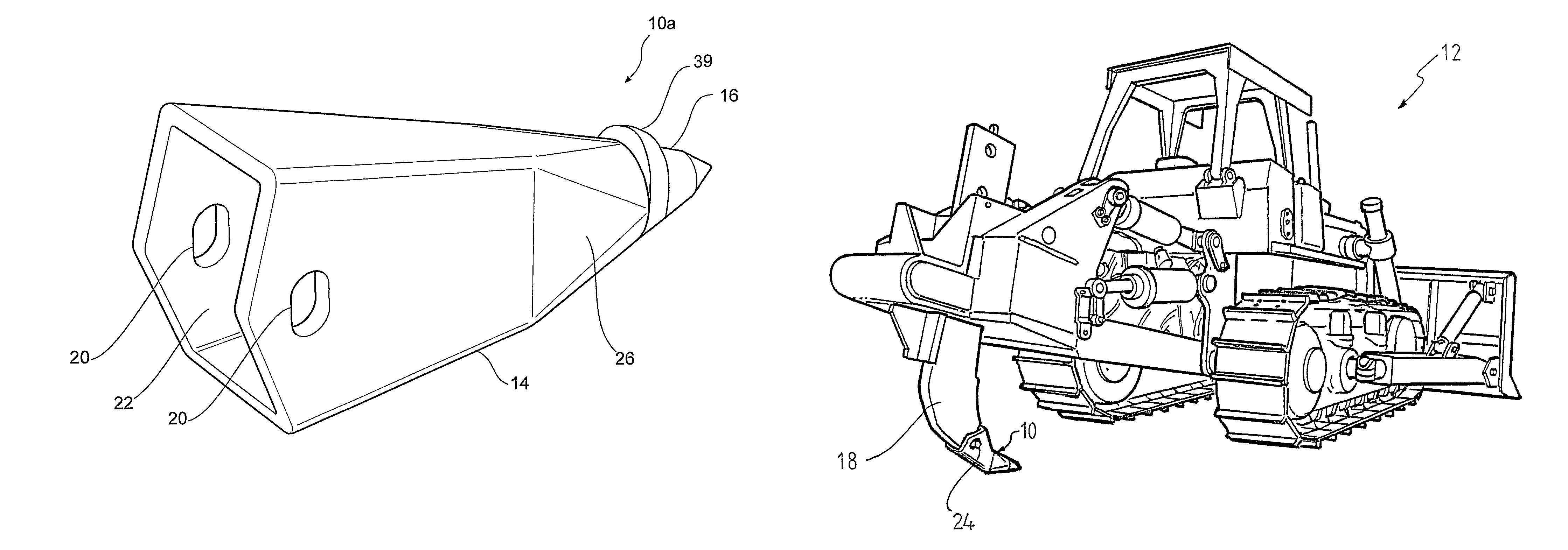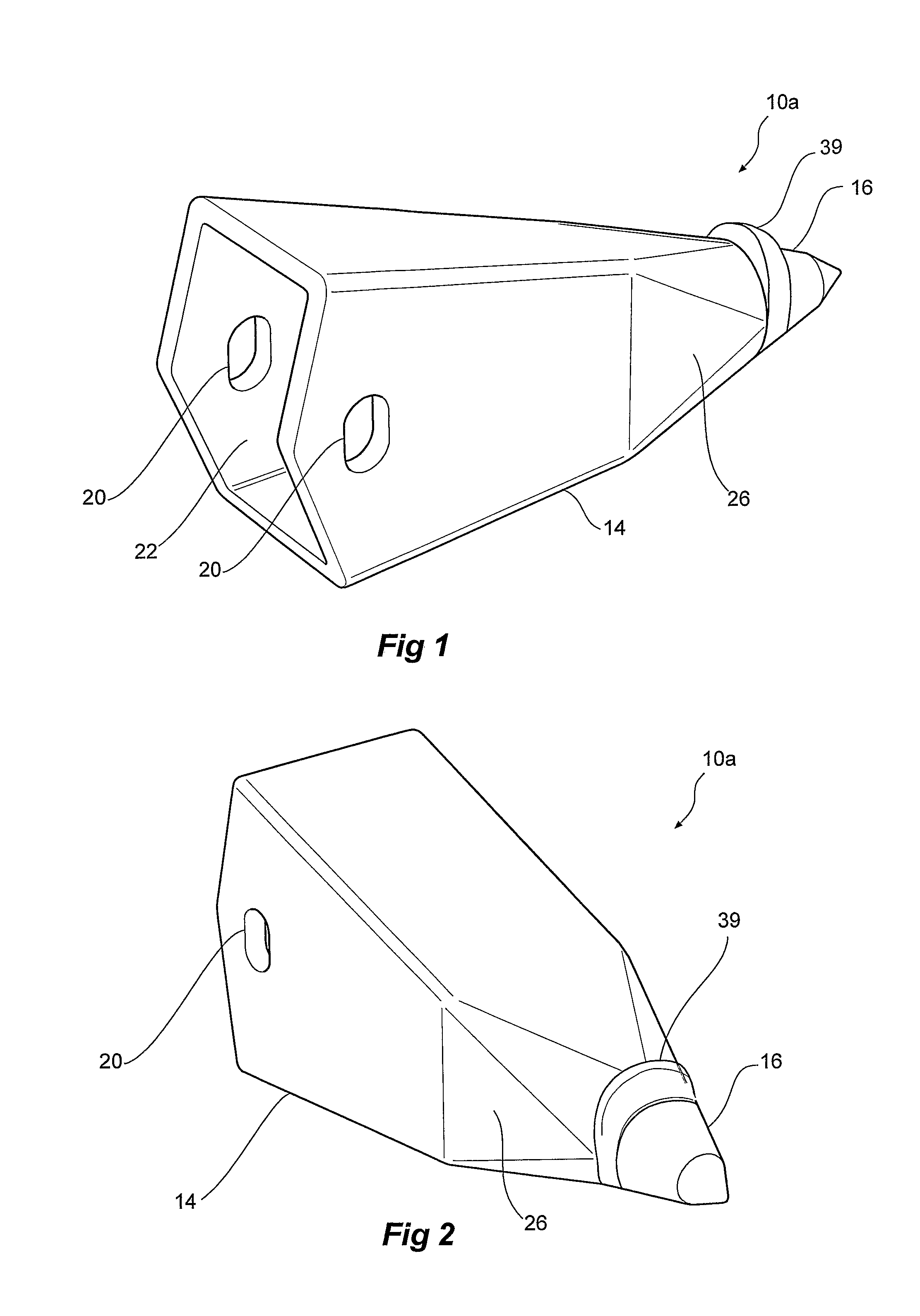Ripper boot
a technology of ripper and boot, applied in the field of ripper boot, can solve the problems of metal fatigue and fracture, considerable wear and tear, and ground up, and achieve the effects of less wear and tear, increased ripper effect, and reduced chatter and drag of the boot through the ground
- Summary
- Abstract
- Description
- Claims
- Application Information
AI Technical Summary
Benefits of technology
Problems solved by technology
Method used
Image
Examples
second embodiment
[0073]the invention is illustrated in FIGS. 8-9 and relates to a ripper boot 10b which has the same interference fit tooth 16 as described above, but which includes an alternate angle of attack.
[0074]This angle of attack concept can be clearly appreciated in FIG. 10 which illustrates the ripper boot 10b of the present invention, as well as a conventional ripper boot 48 in broken lines for the purpose of comparison. Those skilled in the art will appreciate that where the solid portion of the conventional ripper boot 48 extends in the same longitudinal direction as that of the carrier 14, the solid portion 26 of the ripper boot 10b is angled upwardly with respect to the carrier 14 when fully assembled. In having an upwardly angled solid portion 26, those skilled in the art will appreciate that the ripping tooth 16 once inserted will also be angled with respect to the carrier 14.
[0075]The angle of the solid portion 26 is shown in the drawings to be quite substantial for the purpose of ...
first embodiment
[0076]Existing ripper boots may be modified to include the features of ripper boot 10b. For example, a saw cut may be made at the junction between the carrier 14 and the solid portion 26 of the ripper boot 10a of the The cut would be made at a desired angle relative to the longitudinal axis of the carrier. Then, when a solid portion is welded to the angled end of the carrier 14, those skilled in the art will appreciate that it will extend at an angle corresponding with the angle of the cut.
[0077]It has been found that when the tooth is positioned at this angle, the boot cleaves through the ground more efficiently than hitherto known ripper boot arrangements resulting in similar benefits to those mentioned above including reduced chatter, reduced wear and tear on the tooth, and reduced load on the bulldozer. It is to be understood that the angle at which the solid portion 26 extends with respect to the carrier 14 may be made to vary depending on the required operation.
[0078]FIGS. 11...
third embodiment
[0079]The angle is such that in use, the ripping tooth 16 will extend slightly upwardly so as to become more parallel with the ground surface. The benefits of having a raised angle of attack as provided by this third embodiment of the invention have been described above.
[0080]Although not illustrated, it is to be understood that this ripper boot 10c could also include a retaining pin for additional support as described previously.
[0081]Ripper boot 10a could also be modified to include an angled ripping tooth according to this third embodiment by making a straight saw cut at the junction between the carrier 12 and the solid portion 26 and simply replacing the solid portion with one that has an angled bore cast there through.
PUM
 Login to View More
Login to View More Abstract
Description
Claims
Application Information
 Login to View More
Login to View More - R&D
- Intellectual Property
- Life Sciences
- Materials
- Tech Scout
- Unparalleled Data Quality
- Higher Quality Content
- 60% Fewer Hallucinations
Browse by: Latest US Patents, China's latest patents, Technical Efficacy Thesaurus, Application Domain, Technology Topic, Popular Technical Reports.
© 2025 PatSnap. All rights reserved.Legal|Privacy policy|Modern Slavery Act Transparency Statement|Sitemap|About US| Contact US: help@patsnap.com



